Purple Passion Plant Care & Propagation
Written by lisa
Oct 30 2021
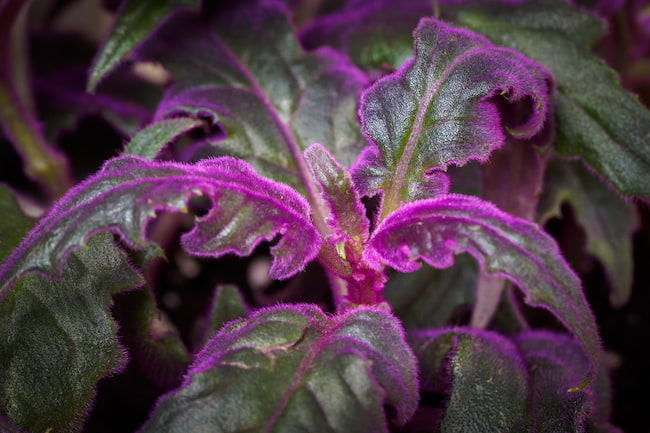
Purple Passion Plant (Gynura aurantiana) is a perennial herb or subshrub with stout stems and many branches. Purple Passion Plant is famous for its leaves covered with velvety hairs. It is a very unique foliage Plant, which is usually used for potted or hanging pot planting, decoration in the brighter study, living room, windowsill and other places. The following sections will talk about Purple Passion Plant info, care, propagation and common problems in detail.
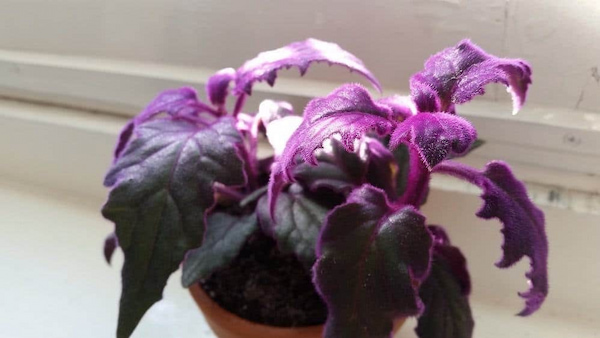
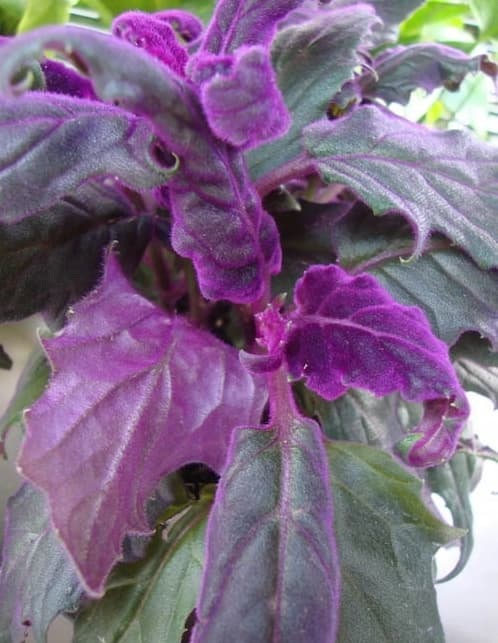
Before propagating Purple Passion Plant in water from cuttings, it is necessary to prepare sharp blades and disinfect knives in advance. Cut the branch, and the leaves at the bottom of the branch should be taken out in advance. After 5 minutes or so, you can wipe on the bottom of the branch a few root powder, which has the effect of sterilization disinfection, also can promote root system faster.
Then you can prepare a small cup, soak the Purple Passion Plant branch bottom in water about three centimeters. Change the water every 3 to 4 days, but also put it in the ventilated place. Keep the appropriate temperature about 20 to 22 degrees. Too high or too low will affect Purple Passion Plant rooting. After rooting and the plant grow a little big, you can replant it in soil. Before transplanting Purple Passion Plant from cuttings, prepare loose and fertile soil. We can use peat soil and leaf mould soil in a ratio of 1:1:2 to make suitable soil for its growth.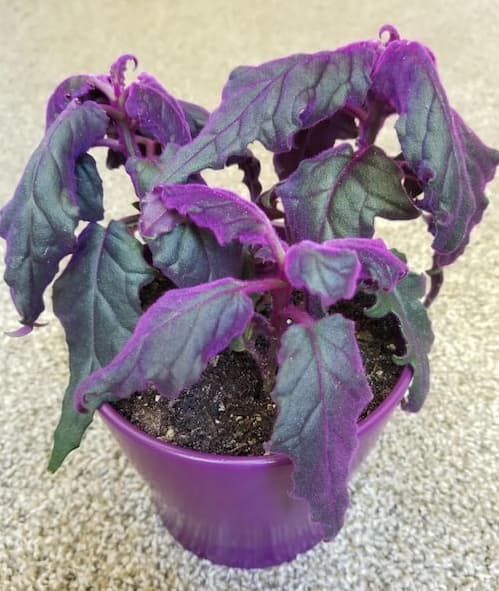
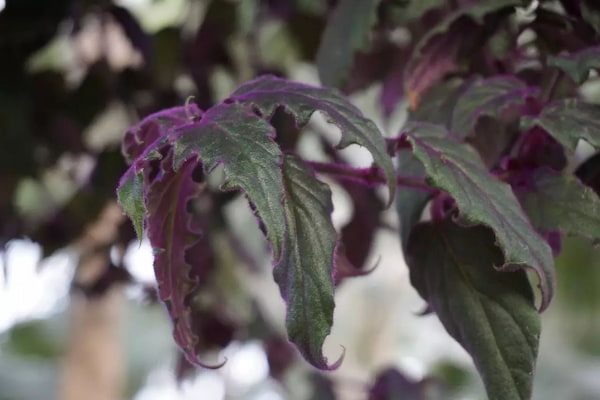
If humidity is low, it is recommended to water more and spray water around the plant. If the temperature is high in summer, you can move the Purple Passion plant indoors at noon to avoid direct strong sunlight.
Read Next:
Top 20 Climbing Plants with Flowers for Your Garden
Purple Passion Plant InfoPurple Passion Plant StemPurple Passion Plant LeavesPurple Passion Plant Flower & SmellPurple Passion Plant CarePurple Passion Plant LightPurple Passion Plant SoilPurple Passion Plant Temperature & HumidityPurple Passion Plant WateringPurple Passion Plant FertilizerRepotting Purple Passion PlantPurple Passion Plant PropagationPurple Passion Plant BenefitsPurple Passion Plant FAQsPurple Passion Plant DroopyIs Purple Passion Plant Safe to Cats
Purple Passion Plant Info
Purple Passion Plant Stem
Purple Passion Plant is an evergreen perennial herb with many branches. purple passion plant stem is succulent, erect when young, pendulous or creeping when grown. The Stem leaves covered with purple velvety hairsPurple Passion Plant Leaves
Purple Passion Plant leaves are opposite, ovate or broadly elliptic, 8 - 15 cm long and 4 - 5 cm wide; The leaf margin has coarse compound serrate, the leaf tip is acute, the vein palmately shape is obvious. The young leaves are purplish red, and when grown they are dark green. The whole plant is densely covered with purplish-red fuzz. It is characteristic in foliage plants.Purple Passion Plant Flower & Smell
Purple Passion Plant blooms as soon as it is mature. Its flowers are small yellow flowers with a little bit of red. The flowers are not beautiful and give off a strong smell. If you want to keep purple passion plants at home, cut the flower off in time. When the Purple Passion Plant blooms, it is fully mature. After a while, it will turn yellow and wither.
Purple Passion Plant Care
Purple Passion Plants like warm, humid, sunny semi-humid and ventilated environment, avoid direct sunlight. Their cold resistance is not strong. The optimum temperature for growth is 18-25℃, and the overwintering temperature is about 8℃.Purple Passion Plant Light
Usually, Purple Passion plants should be kept in a place with bright light, and at least 3-5 hours of scattered light should be guaranteed every day. The more light there is, the darker its leaves become, and it looks very colorful. If you see sunburn on the leaves of the Purple Passion Plant, reduce the light immediately. Avoid direct exposure to the hot sun in summer. Once Purple Passion plant is directly exposed to the strong light, the leaves will become scorched and black, presenting a state of drying and dehydration, thus causing lesions and damage to the whole Plant. If there is not enough light, its leaves will be thin and pale, which greatly affects its ornamental value.Purple Passion Plant Soil
Purple Passion Plant likes to grow on loose and fertile soil. We can use peat soil and leaf mould soil in a ratio of 1:1:2 to make suitable soil for its growth. In the growing season of Purple Passion Plant, a lot of water is needed. The soil should be wet rather than dry. Once the soil is dried out, the Purple Passion Plant leaves will be drooping, so it is necessary to water or spray water immediately. Do not spray water to the leaf, otherwise there will be rotten leaf phenomenon.Purple Passion Plant Temperature & Humidity
The temperature suitable for the growth of Purple Passion Plant is 18-28℃. This Plant is afraid of low temperature, too low temperature will cause the Plant to rot. In winter, the indoor temperature should be above 8℃. The leaf color of Purple Passion Plant also has a certain relationship with the temperature difference between day and night. When the temperature difference between day and night is kept at about 10℃, the pigments in the leaves will be more easily synthesized and accumulated. Also spray water around Purple Passion plants frequently, but do not water on the leaves surface. Purple Passion Plant leaves will be more bright and vibrant in the environment of 50% to 60% humidity.Purple Passion Plant Watering
Purple Passion Plant is afraid of too much water, but do not let the pot soil dry often. If its branches wither quickly in a drought condition, it may be difficult to survive. Water your Purple Passion Plant as soon as you see the plants and leaves drooping. When watering, be careful not to spray water onto the leaves. If water droplets remain on the leaves all the time, they can cause fungal infections. Water once a day in summer when it is hot, once every two or three days in spring and autumn to keep the soil moist. Control water in winter. When watering, do not pour water directly on the leaves, as they are fluffy and can cause rot.Purple Passion Plant Fertilizer
If Purple Passion Plant grows faster and leaves better looking, fill it with liquid fertilizer every two weeks or so during the spring, summer and fall growing seasons. Stop fertilizing in winter when temperatures are low. If the winter temperature can be maintained above 18 degrees, you can give it a supplement of thin fertilizer every two or three weeks at half the usual concentration.Repotting Purple Passion Plant
A single purple passion plant won’t last more than a few years, so normally it doesn’t need to repot. If your plant is larger than the pot or root rot, it is necessary to repot the plant. The best time to repot Purple Passion Plant is spring. At this time, the temperature is relatively low, so it will not cause damage to its roots. When repotting, you can propagate purple passion plant by cuttings or division to get more new plant. (Find more Climbing Plants with Flowers here.)
Purple Passion Plant Propagation
Purple Passion Plant is a relatively short-lived Plant. It usually only grows for about two to three years. It is best to cut a few more tender branches for propagation before maturity. As a relative niche foliage Plant, the Purple Passion Plant is not an easy potted plant to propagate. When cutting propagation, it is difficult to root, and the base of branches is particularly easy to perishable especially at high temperatures. Usually, if you want to propagate more Purple Passion plants, you need to promote rooting by hydroponic propagation method first, and then propagated by soil culture again to develop new potted plants.Before propagating Purple Passion Plant in water from cuttings, it is necessary to prepare sharp blades and disinfect knives in advance. Cut the branch, and the leaves at the bottom of the branch should be taken out in advance. After 5 minutes or so, you can wipe on the bottom of the branch a few root powder, which has the effect of sterilization disinfection, also can promote root system faster.
Then you can prepare a small cup, soak the Purple Passion Plant branch bottom in water about three centimeters. Change the water every 3 to 4 days, but also put it in the ventilated place. Keep the appropriate temperature about 20 to 22 degrees. Too high or too low will affect Purple Passion Plant rooting. After rooting and the plant grow a little big, you can replant it in soil. Before transplanting Purple Passion Plant from cuttings, prepare loose and fertile soil. We can use peat soil and leaf mould soil in a ratio of 1:1:2 to make suitable soil for its growth.

Purple Passion Plant Benefits
- Ornamental Value
- Potted Plant
- Purify Air

Purple Passion Plant FAQs
Purple Passion Plant Droopy
Purple Passion plant droopy probably is due to high temperature or lack of moisture.If humidity is low, it is recommended to water more and spray water around the plant. If the temperature is high in summer, you can move the Purple Passion plant indoors at noon to avoid direct strong sunlight.
Is Purple Passion Plant Safe to Cats
Purple Passion Plant is not toxic to cats or dogs.Read Next:
Top 20 Climbing Plants with Flowers for Your Garden
Latest Updated
- Benefits of Bugleweed - 7 Science-backed Health Benefits
- Bugleweed Dangers & Side Effects - Is It Poisonous?
- How to Plant Evergreen Trees - What You Should Know
- When to Plant Evergreens - Grow Guide for Evergreen Trees
- 12 Wonderful Evergreen Shrubs for Your Garden
- 12 Popular Evergreen Plants with Pictures for Beginners
- When And How To Prune A Lilac Bush Like a Pro
- How to Grow & Care for Lilac Vine (Hardenbergia Violacea)
- Japanese Lilac Tree (Syringa Reticulata) Care & Propagation Guide
- Shumard Oak Pros and Cons - What to Know
Popular Articles
- Winter maintenance of Antirrhinum Majus
- How to Grow Terminalia Mantaly Tree
- How to Grow and Care for Crossostephium Chinense
- How to grow Antirrhinum Majus in spring
- Peristeria Elata (Dove Orchid) Profile: Info & Care Guide
- Underwatered Snake Plant (Sansevieria Trifasciata) - Signs And How To Fix
- How to Care for Brazilian Jasmine Plant (Mandevilla Sanderi)
- How to Grow & Care for Graptopetalum Purple Delight in Summer
- Rosa Chinensis (China Rose): Plant Growing & Care Tips
- How to Care for Baby Sun Rose (Aptenia Cordifolia)